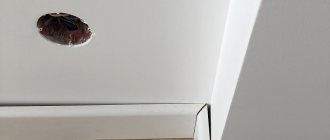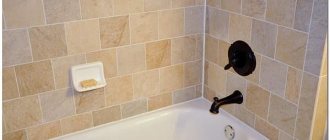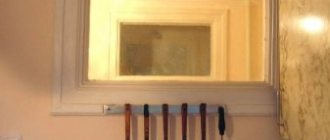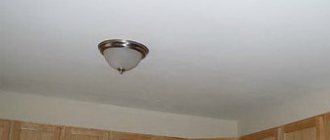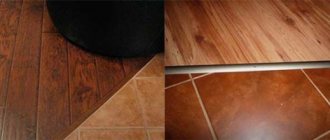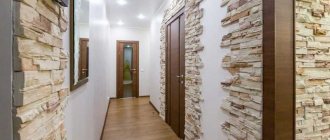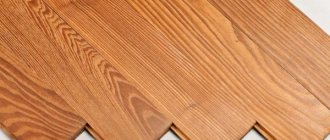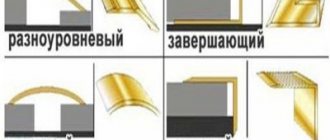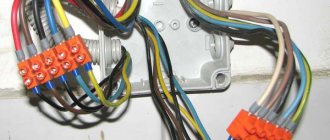Polyurethane foam is used to seal cracks. Plastering cracks and cracks. How to seal a crack with reinforcing mesh. Advice from experts. High-quality reconstruction of premises does not consist in spectacular decorative design of premises, but in reliable sealing of cracks, cracks and joints. The gap between the plates can become a source of dampness, unpleasant odors and microorganisms. Experts know “how to seal the gaps between the wall and the ceiling,” and recommend one of three options. How to seal the gaps between the wall and the ceiling so that they do not crack
Peculiarities
Modern stretch ceilings surprise with their diversity. Their design includes the most extraordinary ideas that are successfully used in residential buildings and apartments, and public places. With the help of such a decorative element, you can create a special atmosphere in the room, making it as beautiful and cozy as possible. Professional designers claim that it is tensile structures that can fill a room with a special atmosphere and add some zest to the interior. Let's consider the main advantages of suspended ceilings.
Aesthetic appearance
These designs give the room modernity, elegance and originality. The material used does not lose its original appearance for many years, maintaining the richness of color and the beauty of texture. It does not deform during use.
Long service life
Stretch ceilings can decorate the interior for up to 20 years, which allows you not only to save your budget, but also to enjoy a beautiful view of the ceiling every day.
Durability and safety
The material from which suspended ceilings are made is characterized by excellent strength. It is completely safe for health, as it does not contain toxic substances. These structures can become reliable protection against leaks from the apartment above and can withstand heavy loads.
Affordable price
Compared to other finishing materials, stretch ceilings have an affordable price, which is their great advantage.
Possibility of space zoning
These designs, due to the design, size and location of the panel, can divide the space of the room into separate functional zones.
A wide range of
You can order a stretch ceiling model from a catalog with a lot of ideas presented for design. A variety of design solutions contribute to the successful integration of these structures into the interior of any stylistic direction.
Ease of installation
The designs provide two types of fastening to the surface of the ceiling base. However, both methods cannot be implemented by everyone without resorting to the services of professional specialists.
Ceiling molding
Illuminated molding
You can give a finished look to the ceiling - suspended, made of plasterboard or simple, painted white - with the help of moldings, which have long become familiar. They can have different widths, materials, colors and textures.
A wide range of ceiling decor products offered by manufacturers allows you to select elements for decoration in any interior.
Painted in the color of the walls, the molding visually increases their height
The term “molding” refers to various elements of stucco molding for decorating the ceiling and walls. For the overlay profile that decorates the joint, the name “ceiling molding”, “plinth” or “border” is used.
The material used to manufacture such products can be:
- Wood;
- Polyurethane;
- Polystyrene;
- Natural gypsum.
Wood moldings
Making joints with natural wood
With the help of wooden moldings you can give the room respectability. This finish is appropriate in classic interiors, as well as where wooden suspended or false ceilings are installed.
The price of such products depends on the type of wood that was used to make them. For mid-price segment skirting boards, spruce, poplar or alder are used. Expensive items include products made from oak, yew or mahogany.
Wooden plinth is highly decorative
The advantages of wooden skirting boards include the following:
- Due to their natural origin, natural beauty and ideal environmental performance, wooden skirting boards can be used in residential areas;
- Natural wood can be treated with stain, varnish, enriching its natural pattern and shade, or painted in any color with paint;
- If you paint the molding the same color as the walls, the ceiling will become visually higher and the room will acquire additional volume;
- You can make the room more compact by painting the baseboard the same color as the ceiling.
The carving emphasizes the aristocracy of the wooden finish
Important! It takes special skills to install wood molding correctly.
Foam molding
Foam molding is the most budget-friendly option for decorating the joint between the wall and the ceiling. These products are easy to use, they weigh little and are easy to cut with ordinary scissors. But you should be careful not to accidentally damage the foam border, as it is quite fragile.
The disadvantage of this material, like the wood discussed above, is flammability.
Polystyrene molding
The junction of the ceiling and wall, decorated with duropolymer
Polystyrene plinth for the ceiling is made by extrusion. Such products are distinguished by a clear relief and have a smooth matte surface. Such products are harder and more durable than their foam counterparts.
One of the positive qualities of this material is its affordable cost.
Molding can be selected for any interior
The advantages of this material are that it does not contribute to the maintenance and spread of fire. Polystyrene is also easy to work with, it is easy to cut, but it is more resistant to mechanical stress.
Polyurethane molding
Unlike other products, polyurethane molding has good flexibility
Polyurethane plinth is practical to use, it can be painted, and due to the presence of rubber in its composition, this material can bend without losing its integrity, which allows it to be used to design semicircular structures.
Polyurethane baseboard in bathroom design
Such borders can have a smooth, even surface or patterned, with a clear pattern and maximum detailing of small elements.
Among the positive qualities of the material, the following can be noted:
- Environmental friendliness;
- The products do not have a specific odor;
- The material is non-flammable;
- The products are light in weight;
- The material is easy to install;
- They have a pre-primed white surface that can be painted any color if desired. In this case, the paint is distributed evenly.
Polyurethane stucco
In different styles
LED strip under a suspended ceiling
The mood of the rooms and the stylistic arrangement of interior elements depend on what the ceilings in the apartment will be like. A bright top is a rather dangerous “thing”. It must be correctly integrated into the design concept, otherwise there will be complete dissonance. Even the simplest white canvases can be different in texture. Matte, glossy, satin, textured - these are all different surfaces, each of which looks special.
For classic interiors, it is traditional to use white. But color variations with light beige and milky are also possible. The main thing is that it is lighter than the wall decoration. As for the texture, it is possible to use a matte or satin surface. If the style of the room contains notes of luxury, then the ceiling may have a textured surface - velvet, leather, marble and other imitations of expensive materials. It is also possible to use photo printing, for example, images of frescoes, monogram designs. Glossy top is used less often in such styles. Its use is possible if the decor of the room can be called “modern classics”.
For a romantic style typical, for example, of Provence, it is possible to use various shades of lavender, turquoise, as well as whitened flowers. It would be appropriate to use photo printing of landscapes, skies, butterflies, flowers, patterns. The ceiling surface in such styles is usually matte.
Ceilings with suitable ornate patterns and textured surfaces will fit well into ethnic styles. A good solution would be to use satin surfaces. Gloss is completely unusual for this style. As for color, it can be white or light.
Modern styles are bright designs and images, glossy and mirror surfaces, bold and contrasting color combinations. These are also all kinds of new products in the ceiling coverings market - translucent canvases with hidden lighting, “starry sky”, double widge, floating ceiling and others.
If the style of the room can be described as modern, then the top here can be glossy, pearl gray, turquoise, pale green or lilac. Drawings of flowers, grass, and all kinds of plant motifs can also be applied to the canvas.
In high-tech, the use of metallic gloss and intricate lighting are acceptable. The main “trump cards” of the style are symmetry and contrast.
Causes of cracks in plastered ceilings
Plastered surfaces are more susceptible to cracking than others. These are the properties of plaster. Its layer can be deformed for various reasons.
- Shrinkage of the building.
- A strong blow to the surface.
- Vibration from highways or other roads located near the house.
- Flooding from above followed by drying.
- Deformation of the ceiling slab.
Whatever the reasons, you need to repair cracks in the ceiling yourself. To do this, you will need the same material with which the surface is finished: plaster . It does not have to be exactly the same as the one used during finishing work. But when choosing a material, you need to adhere to a couple of rules.
- If the base mixture is cement-sand, the crack in the ceiling is sealed with a similar composition or gypsum. The optimal choice is “Fügenfüller” . This mixture has been tested for quality by many years of widespread use.
- If the base layer is made of gypsum plaster, only a similar one will be suitable for repair work. It is not recommended to use cement-sand.
New products and trends
Lighting in a bathroom with a suspended ceiling
Progress does not stand still. The use of various textures, materials, and different lighting scenarios allows you to realize your wildest fantasies on the ceilings. The canvas can change its pattern literally with one movement of the hand when the switch is pressed. And by using multi-colored fabric, you can effectively solve zoning issues (and this without erecting complex multi-tiered structures!).
A single-level stretch ceiling is applicable where it is impossible to construct a complex frame. Thanks to modern technologies, a two-, three-, or even multi-color canvas can be displayed at the top. In fact, several colored canvases are combined, “welded” together and the original material is obtained. It is this solution that allows you to achieve clearly defined zones. The main thing is to use a film of the same texture when deciding to install a multi-colored stretch ceiling. Too big a difference will be noticeable to the naked eye.
Placing accents on the ceiling using a drawing or photo printing still remains a relevant solution. A huge variety of images allows you to choose exactly what will highlight your individuality and style. The built-in lighting will also benefit the already interesting top. It was thanks to the combination of “photo + light” that the “Starry Sky” offer appeared on the stretch ceiling market.
In many ways, built-in lighting can determine the design of the ceiling covering. Not long ago, translucent film appeared as a coating. This is what is used to create an incredible effect from the built-in light. It would seem like an ordinary ceiling. But as soon as you turn on the light, patterns “bloom” on it.
An unusual and fashionable solution would be a tension wall as a kind of continuation of the ceiling. It is not limited by walls, it flows smoothly into the walls. In such a room there are no corners, but only smooth lines. In addition, such a design can benefit any area; for example, the ceiling can smoothly descend to a luxurious bed.
The use of bright or dark colors (especially if the canvas is matte) is a rather bold and extraordinary decision. Usually it is applicable in public institutions, less often in apartments and houses. Black matte ceiling or red gloss - not everyone can withstand the psychological “onslaught” of these paintings, so most often calmer finishing options are chosen for life. For example, a bright color combined with a calmer one. This will solve zoning problems and expand the space if one of the colors matches the color on the ceiling.
Something new appears all the time in the stretch ceiling industry. Not so long ago, so-called “carved” ceilings and canvases with a hidden image appeared on the market. They look like single-level ones, although in fact two canvases are used for their construction. For the first type - perforated ceilings based on Apply technology, the basic one with a perforated pattern is used.
To build ceilings using Double Vision technology, hidden lighting is used, the main canvas is “active” in daylight, and photo printing of a hidden image (it can be applied on the reverse side of the film or be a separate element). When the light is switched, the inactive image appears. The indisputable advantage of this kind of ceilings is their bright design, but they have one drawback - their construction will require a much higher height than for simple single-level ceilings.
Modern single-level stretch ceilings can be an original and accent decoration of the interior. It is simultaneously capable of bringing dynamics and liveliness to the interior or can be a calm frame for the room. Modern technology can be that “magic wand” that can transform a boring and nondescript top into a bright and playful space with just the flick of a switch. Many textures and variations of the coating make it possible to solve complex problems of placing accents or zoning with the help of its installation. The ceiling is no longer a faceless canvas, but a full-fledged and bright element of the interior.
You can see all types of suspended ceilings below.
Masking tape installation technology
If we talk about installing a plug, then there is no specific technique in this case. With each type of tape used, it is carefully pressed into a special groove. Such places for fixing decorative elements are called slot connectors. Installing the tape will save you not only from the technical gap, but also from the accumulation of dirt and dust between the wall and the tension covering.
The plug for suspended ceilings is mounted around the perimeter of the room. However, experts do not recommend using glue. For an even seam, craftsmen advise maintaining an angle of 90°.
The plug is installed using a conventional spatula. Before you begin attaching masking tape, check the evenness of the walls and structure. If possible, correct all defects.
Installation is carried out as follows:
- determine and cut the required length of the element by measuring the length of the wall surface;
- apply it to the gap formed;
- Using a spatula, carefully tuck the plug between the wall and the profile;
- Gently press the product and trim off any excess parts.
On a note! If you are installing an F-shaped tape, secure it using special wall corners or a PVC fastening profile.
When installing the tape, make sure that it does not stretch. When installing, it is better to compress the product lightly, since it will be exposed to different temperatures during operation. If the tape stretches, then over time the joints may separate (if two pieces of fabric are connected with it), and the plug will simply fall out in some areas.
Professionals advise fastening the product in small sections (3-5 m), joining individual parts at these intervals.
After the tape is installed, the ceiling will acquire a finished and harmonious appearance. An important advantage of a decorative plug is that it can be used repeatedly. To dismantle, just carefully pry off the tape with a screwdriver. After which she will effortlessly exit the profile.
Installing tape in the corners of the room
It is also very easy to install stretch ceiling edging in the corners. In this case, a spatula is also used. An alternative can be a rubber hammer.
The technology will be as follows:
- cut the product to the required length;
- connect two elements to each other. It is important that they form a strictly right angle of 90° between themselves. An exception is curved structures, when finishing which the angle formed with masking tape can be large;
- secure the tape with a spatula;
- Use a utility knife to cut off any excess parts.
Attaching corner masking tape
Installation of corner masking tape for suspended ceilings is carried out without the use of sharp objects to prevent damage to the canvas. For work you will need: a tape measure, a stepladder and a stationery knife.
On a note! All plugs are attached almost identically - at an angle of 90° into special grooves.
After purchasing the tape, without cutting off its individual pieces from the roll, insert one end into the opening resulting from the installation work. Carefully tuck it along the entire wall.
When you approach the first corner, use a utility knife to carefully cut the product so that its edge fits into the corner. Continue inserting the plug around the perimeter until the technical gaps are completely closed.
Such inserts are used not only for single-level ceilings, but also for multi-level structures when it is necessary to close the joints between adjacent panels. Stretch ceilings of all levels will undoubtedly transform any room.
Stretch ceiling to wallpaper
Kitchen lighting options with suspended ceilings
If the installation of the structure takes place before the walls are pasted, then their alignment, as well as all preparatory work, must be carried out without fail. Otherwise, the installed baguette will only emphasize unevenness that cannot be hidden using decor. It is also worth considering that while you can try to protect the walls, it is unlikely that you will be able to close the ceiling, so there is a possibility of it getting dirty and damaged.
The positive aspects of this installation method are as follows:
- there is no need to worry about the safety of the wall covering, because the thermal effect will be carried out before finishing the walls;
- Over time it is possible to replace the wallpaper.
It is also worth considering the negative points:
- there is a risk of contamination and damage to the canvas;
- When trimming wallpaper, without special skills, you can damage the decorative tape or even the canvas itself.
If renovations are often taking place in the room, then, of course, it is preferable to first make a tension structure and stick wallpaper closely to its frame. This will not affect the design, and the room will be updated every time.
Another factor that can affect the installation of a tensile structure before wallpapering is the material from which the walls are made. If they are made of red brick, then it would be better to first make a suspended ceiling and then glue the walls, because red dust can leave a mark.
Method for removing larger cracks
Eliminating large defects requires a slightly different approach:
- The area around the crack that has formed is also cleaned;
- The recess is filled with mounting foam, sealant or fabric;
- Now you should definitely seal the crack with serpyanka tape (a kind of adhesive mesh, sold in building materials) or with a strip of fabric with a margin of width. The material is pre-wetted in a PVA solution and applied to the recess, and then wait until it completely dries;
- Now you need to check how well the tape or fabric holds, whether it “walks”. After which a layer of putty is applied and leveled to the level of the plane;
- After a day, you can sand, prime and paint the renewed surface.
Designer stretch ceilings
Stretch ceilings appeared quite a long time ago, and quickly gained great popularity. It all started with the invention of PVC film - despite the fact that draping ceilings with fabric has been known for a very long time, it was PVC film that made it possible to realize stretch ceilings in the form in which they are known now. And if at first the use of stretch ceilings was limited simply to rooms where it was cheaper and easier to hide the main ceiling than to redo it, today, thanks to color printing and connections with other technologies, stretch ceilings have opened up wide spaces for design.
Small cracks
Sealing small cracks is not a lot of work, but it requires thoroughness. Even if only spot puttying is required, it must be done competently, without neglecting the details and not limiting ourselves to masking imperfections.
The sequence of actions is as follows:
- Anything that crumbles, chips, or peels off must be carefully removed. In some cases, until the concrete layer is exposed. The edges of the crack must be perfectly clean. Here you will need to actively work with a spatula or even a wire brush. Remove dust with a dry brush.
- The prepared, cleaned surface is moistened with water. Spraying is preferable to brushing.
- Application of gypsum mixture. It will not stick to a dry surface due to low adhesion, which is why it is necessary to moisten the repaired area well. The putty is applied with a small spatula along the entire length. The movements are smooth, with pressure. The main thing is that the putty fills the entire crack. It is advisable to avoid it falling on the floor; it is difficult to remove dried material, so there is no need to take a lot of it on a spatula. The finished mixture contains PVA, which makes the composition quick-drying. Therefore, when working with him, you cannot hesitate.
- The putty layer must dry for at least 24 hours.
- Leveling the surface until smooth. For this purpose, a skin or a grater is used.
Useful information: “How to putty the ceiling yourself”
If the cause of cracks is falling off plaster or peeling of paint material, it is practiced to seal the defects using primers. Before applying the putty, the cleaned area is primed in 1-2 layers (the first layer must be completely dry). The best choice is a deep penetration primer. It is required for wet rooms and ensures the quality and reliability of the putty fastening.
Tension walls: a fashionable novelty
Adopt this method of interior decoration before it becomes widespread and appears in 80% of apartments in our country. What are tension walls? Essentially, it is a PVC film or fabric, which, by analogy with stretch ceilings, is attached to the walls.
Fashionable? Yes! Creative? Certainly! It looks amazing when the wall is perfectly smooth, hiding the imperfections of the original base, but at the same time it has a visual appeal that is inaccessible to other finishing methods
If you have a desire to decorate your living space exclusively and are still looking for an interesting finishing material, then we advise you to pay attention to a suspended ceiling that is installed on the wall
Wall decoration with stretch ceilings photo
This method of decoration looks interesting in tandem with PVC ceilings, when the canvas smoothly transitions from a one- or even two-level ceiling to the wall. It is also noteworthy that such a finish would be appropriate both in a classic interior design and in a modern one (naturally, with different colors, textures and colors). For a classic interior, for example, a restrained color scheme of the canvas and a matte finish are suitable, while modern styles happily demonstrate colorful, unusual scenes in gloss, also illuminated by lamps from the inside.
Stretch ceiling on the wall photo
Main types of stubs
- The T-cap is commonly used when decorating walls with ceramic coatings. It is an elastic beam, with a plug, having a shade contrasting with the shade of the ceiling or similar to it. Basically, such plugs are used to decorate walls made of tiles or porcelain stoneware.
- L-shaped . It is sometimes called a “wall corner”. It is a soft and elastic plug that perfectly closes the existing gap and beautifully frames the ceiling. Due to its elasticity, it is easily pressed into the groove. The L-shaped cap is installed directly to the wall, which helps to connect the ceiling and uneven walls very nicely.
- Profile or plug-connector. This element is intended for joining fabrics. Has a different shape from the plug. The profile is also equipped with special “locks” on both sides. It is attached completely differently and is made in various widths and shades. The main advantage of the profile is the ability to use several canvases with different textures and shades, which allows you to create an even more decorative design of the room. The profile has a fairly wide edge, which makes it easier to work with contrasting shades, as the result is a very clear border.
- Decorative baguette. This type of plug has an imitation of forging or modeling. This is a very beautiful type of stretch ceiling frame, suitable for almost any type of decoration.
Thus , when planning to install a stretch ceiling, you need to carefully consider such a seemingly insignificant element as a plug.
This is very important, since the gap that remains after installing the ceiling leaves behind a feeling of sloppiness and unfinished repairs. This indicates the need to use a profile to decorate the ceiling. The choice of shade and profile shape depends on the design of the room, the type of ceiling and the individual wishes of each person. Typically, caps in white and black shades are used, since white stretch ceilings are the most popular (due to their inexpensive price and ability to visually enlarge the room).
If the junction of the ceiling and the wall is decorated with a white border, the gap is masked. Black edging is used to highlight the border more clearly. Plugs of different shades should be selected depending on the shade of the ceiling and walls. White edging is sold in reels of different lengths, which is very convenient when choosing the footage you need. Important! You should not use caps of contrasting shades if the walls have a pronounced curvature. This way it is only emphasized.
Lighting
The level of lighting in the room is of particular importance. It is necessary to create the most correct additional lighting system. Spotlights are ideal for this; they can be distributed not only around the perimeter of the tension structure, but also in a zigzag pattern. A suspended ceiling, supplemented with these elements, looks attractive and laconic. An interesting design approach to interior design allows you to adjust the level of lighting based on the time of day, as well as individual needs.
If you decorate the ceiling with built-in lighting, you can get the illusion of realism and volume. For a special effect, you can create a pattern on the canvas using the built-in LED strip. You can decorate the tension structure in different ways. Moreover, if you take diode light sources as a basis, you can combine them with wall decoration. For example, a good solution would be to illuminate a tension structure with a transition to the wall. In this case, the lamps can be placed around the perimeter of the structure.
Closing the defect with putty
This method of cleaning cracks is considered the most common. For better puttying, you need to expand the defect. The formed “pits” should be thoroughly cleaned of dust and dirt, and then moistened with water.
To repair cracks in the ceiling with putty, you need to apply the material in small portions several times. The amount of putty used will depend on the depth of the pothole.
Features of laying layers of putty:
- Cover the bottom of the crack with the first portion of the mixture;
- The second portion should be distributed so that it fills 65-70% of the ceiling gap along the entire length;
- The last layer and its grouting are carried out flush with the surface of the panel.
Each layer should be laid only after the previous work has completely dried.
To make the putty more flexible, it is better to add PVA glue to its composition. Having added this component, the plaster must be used up as quickly as possible, since its setting time is reduced.
PVA glue can be used as a primer. To use this option, it must be mixed with water and applied to the defective area. After this, you can begin to putty the crack.
Why choose this design?
The main reason why owners choose this design is the opportunity to make the room original, transforming it beyond recognition. At the same time, you will not need to invest a lot of money in repairs. No other type of design provides so many opportunities for a designer with limited financial resources. An alternative to a suspended ceiling with a transition to the walls is plasterboard structures, but it is worth considering that purchasing this material will cost more.
You can choose a design from a variety of options, it all depends on the personal preferences of the owners. You can choose a plain film, a canvas with a pattern, or apply photo printing to the surface. Photo printing cannot be done on plasterboard products; the image will need to be applied using paints or photo wallpaper, which will significantly increase repair costs.
The installation of the structure is carried out in the shortest possible time. There is no need to carry out any procedures yourself; the work will be done by specialists from the company where you ordered the tension covering. If you want to carry out the installation yourself, you should opt not for PVC film, but for fabric. To tighten it, you do not need to use a heat gun, so the work can be easily done by yourself.
If there is free space between the wall surface and the stretched fabric, you can use it to lay wires or soundproofing materials. Lighting fixtures, which are often mounted on a ceiling surface, can be mounted on the wall. It looks attractive and original.
A stretch ceiling extending onto the wall is the best choice for finishing attic spaces. Attics are characterized by low walls and inclined floor planes. If you finish with a stretched fabric, the result will be a perfectly flat surface. Another advantage is that you won’t need to invest a lot of money in repairs. You can select the material for each surface separately.
How to seal a gap with reinforcing mesh
To fill holes, a reinforcing mesh is used, which must be covered with a layer of plaster. Putty is applied to the surface of the sealed crack, which is sanded to an impeccable level of smoothness with a grinder or sandpaper. The reinforced bandage can be replaced with linen or cotton tapes. Textile ties are prepared in advance: they are dipped in hot water and ironed. After the thermal procedure, the bandages are dipped into a special composition, the role of which is played by a paste solution, cellulose or wood glue, wrung out and the cracks are closed with them. The strips are straightened with a spatula and, after drying, putty is applied.
